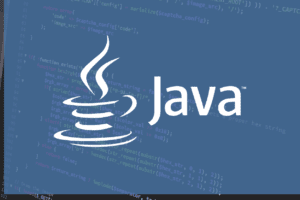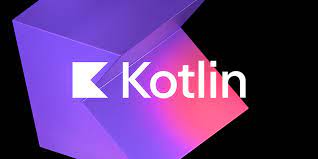Java and Kotlin are two extremely popular programming languages in the software development realm. Both languages have their own set of pros and cons, and developers might find themselves faced with choosing one over the other, though, in truth, there is no reason why you cannot use both, which we will discuss in more detail below. In this programming tutorial, we will discuss the differences between Kotlin and Java, and their use cases. We will include code examples, where appropriate, for demonstration purposes.
What is Kotlin?
Kotlin is a newer programming language that you may have heard of in relation to Java. It was introduced by the developer tool maker, JetBrains, in 2011, making the language just a little over a decade old. It is an open-source programming language that runs on the Java Virtual Machine (JVM), and was originally developed as a predecessor for Java. As such, Kotlin is fully compatible with existing Java codebases, which means you can mix and mingle your Kotlin and Java code together.
As a proposed successor to Java, Kotlin was designed to be more efficient, concise, expressive, and safer than Java, and its developers also sought to offer better support for functional programming than Java provides, currently.
You can learn more about Kotlin in our tutorial: Introduction to Kotlin.
What is Java?

Java, meanwhile, is an older programming language, having been introduced to the developer world back in 1995 by Sun Microsystems. It is commonly used for developing enterprise applications, mobile apps for Android devices, and server-side programming – to name but a few.
Java is a strongly-typed language with an emphasis on code readability, maintainability, and portability. This is thanks, in part to its object-oriented features; many programmers believe Java is a full-fledged object-oriented programming (OOP) language, but this is not quite true; it does support OOP features like inheritance, polymorphism, classes, objects, and encapsulation. However, Java uses primitive and non-primitive data types, which eliminate it from being a true OOP language, because in object oriented programming, data types are objects – that is not the case with primitive data types.
You can learn more about Java in our tutorial: What are the Benefits of Java?
What are the Differences Between Java and Kotlin?
Below we will highlight some of the most important differences between Java and Kotlin, which should help you decide which language you want to pursue or write your project in – if you opt not to use both.
Syntax Differences Between Java and Kotlin
Probably the biggest difference between Java and Kotlin lies in their syntax. As stated, Kotlin syntax is more concise and less verbose when compared to Java, by design. Kotlin relies on fewer semicolons, braces, and other types of boilerplate code, which, in turn, makes it much easier to read, troubleshoot, and write. To see how much simpler Kotlin is than Java in terms of syntax, let’s look at a simple “Hello, World!” program written in both languages:
Example code for “Hello, World!” written in Java:
public class HelloWorldExample { public static void main(String[] args) { System.out.println(“Hello, World!”); } }
The above code, when ran in an integrated development environment (IDE) or code editor, produces the output:
Hello World!
Here is the same “Hello, World!” programming written in Kotlin:
fun main(args: Array) { println(“Hello, World!”) }
Once more, running this code creates the same output as our Java code:
Hello World!
Previewing the two examples, we can see that the Kotlin version is much shorter and more contains less code. Kotlin’s main function does not require a class, and the type of the arguments gets automatically inferred, saving us a bit of work. Extrapolate that into a much larger program, and you can easily see the benefits of Kotlin’s syntax.
For another example, we can look at how you create classes in Java versus how you create classes in Kotlin:
Here is some example code showing how to create a class in Java:
public class Human { private String name; private int age; public Human(String name, int age) { this.name = name; this.age = age; } public String getName() { return name; } public void setName(String name) { this.name = name; } public int getAge() { return age; } public void setAge(int age) { this.age = age; } }
In the above code example, we create a class named Human and gave it two properties: name (a String value) and age (an int or integer value).
To achieve the same thing in Kotlin, we would use the following code, which shows how to create a class in Kotlin:
class Human(var name: String, var age: Int)
Once more, Kotlin requires far fewer lines of code to create a class when compared to Java.
Reading: Java versus Python
Zero Safety in Kotlin and Java
Null safety is another difference we should discuss when breaking down the differences between Kotlin and Java. NULL values can cause errors if developers do not account for them, as they are not technically a value in the same way that 100 or abc are. To that end, Kotlin handles null safety better than Java, as Kotlin has a built-in system for null safety that prevents null pointer exceptions at compile time.
Java, meanwhile, does not have this feature, and thus, null pointer exceptions are a common source of bugs in Java programs that can lead to crashes or unexpected behavior at runtime. Kotlin’s null safety feature avoids this and ensures that code is free of null pointer exceptions, making codebases more stable and less error-prone.
Here is some example code demonstrating problems with Null values in Java:
String name = null; System.out.println(name.length());
The above code, when run, results in a null pointer exception at runtime because the value of the variable name is assigned null.
In Kotlin, it is not possible to assign a null value to a variable unless programmers explicitly indicate the null using the ? symbol, as shown here:
var name: String? = null println(name?.length)
Here, the ? symbol infers that the name variable can be null, and the length property is only accessed if the value of name is not null. Coding in this way protects programs from null pointer exceptions at compile time.
You can learn more about Java and null values in our tutorial: How to Handle Null Values in Java.
Type Inference
Java is a statically typed language; this means Java developers must specify a variable type when they declare it. This can become tedious and burdensome, especially when using types.
Kotlin, however, uses type inference, meaning the compiler is able to automatically infer the data type of a variable based on its value. Once more, this makes code easier to write, more efficient, readable, and less prone to bugs.
functional programming
Kotlin is known for its support for functional programming, while Java only began supporting functional programming in Java 8. Kotlin incorporates functional programming features such as lambdas, higher-order functions, and lets programmers treat functions as first-class citizens.
interoperability
In programming and software development, the phrase interoperability refers to how two or more languages work together. If a programming language can call another programming language’s code, then it is considered interoperable with that language. One powerful feature of Kotlin is its interoperability with Java, which makes sense, since it was built off the Java Virtual Machine and supports all of the functions within Java. Because of this, Kotlin can call Java code and Java, in turn, can call Kotlin code without any issues. Because of this, migrating code from Java to Kotlin is a snap and developers wanting to make the transition do not need to rewrite their entire codebase from scratch.
Reading: Top Tools for Remote Developers
performance and stability
Java has been around since 1995 – over two decades – and has a mature developer ecosystem, which includes a significant number of libraries, frameworks, and tools. Because of this, Java applications perform very well, and it has enjoyed a lot of performance optimizations since its inception.
Of course, Kotlin is a fairly new language, and, as such, it has not benefited from as many performance optimizations as Java has. Despite this, Kotlin’s performance has been steadily improving and developers anticipate it will become at least as performant as Java, if not more so, in the near future.
Community Support and Learning Resources
Not surprisingly, Java boasts a rather large, thriving, and veteran community, with tons of resources available to developers. These resources come in the form of forums, blogs, and tutorials dedicated to Java, as well as tools, frameworks, and libraries – not to mention the many seasoned Java developers that exist, all eager to lend their knowledge and help your learn and troubleshoot code. And some even for free!
Kotlin’s community, as we would expect, is smaller than Java’s, but it is growing at a rapid pace. Kotlin is enjoying a growth spurt and continuing popularity in recent years, and has even been adopted by many large tech companies, such as Google, JetBrains, and Atlassian, the maker’s of Jira.
Final Thoughts on Java versus Kotlin
To summarize our tutorial, Java and Kotlin both have their strengths and weaknesses in terms of what they bring to the table for programmers. Java has been around for quite some time and has a more mature developer ecosystem, which makes it a powerful, feature-rich language with excellent community support, stability, and security. Despite this (or maybe because of this), Java’s syntax can be verbose and it lacks some of the modern language features that Kotlin offers, including null safety and concise syntax.
Kotlin, for its part, does offer a concise syntax, better support for functional programming, and great null safety features. Kotlin is also 100% interoperable with Java, making it a great option for companies that want to migrate existing Java codebases to a more modern, efficient programming language.
Ultimately, choosing between Java and Kotlin will depend on your specific needs and preferences. If your project requires high performance, stability, and a large codebase, backed up by plenty of framework options, libraries and tools, Java may be the better choice. If you are working on a software project or application that requires modern language features and support for functional programming, Kotlin is a great option.
No matter which you choose, both Java and Kotlin are strong programming languages that are widely used for software development. As a programmer, it is always a smart decision to keep up-to-date with the latest programming languages and tools and to choose the language that is best suited for the task at hand – even if that means multiple languages.
Reading: Best Practices for Java Developers
